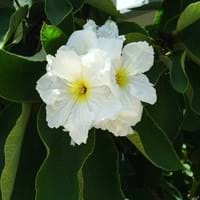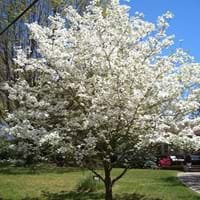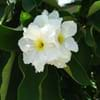Life Span
Perennial
Perennial
Origin
Southwestern United States, Texas, Mexico
Northeastern United States, Mid-Atlantic United States, Southeastern United States, North-Central United States, Central United States, South-Central United States, Canada
Types
Not Available
Amerika Touch-O-Pink, Autumn Gold, Bay Beauty
Habitat
Well Drained
Dappled Shade, Woodland Garden
USDA Hardiness Zone
8-11
5-8
Sunset Zone
H1, H2, 8, 9, 10, 11, 12, 13, 14, 15, 16, 17, 18, 19, 20, 21, 22, 23, 24
2b, 3a, 3b, 4, 5, 6, 7, 8, 9
Habit
Oval or Rounded
Oval or Rounded
Flower Color
White, Yellow, Ivory
White, Green
Flower Color Modifier
Bicolor
Bicolor
Leaf Color in Spring
Gray Green, Dark Green
Green
Leaf Color in Summer
Gray Green, Dark Green
Green
Leaf Color in Fall
Gray Green, Dark Green
Orange, Crimson
Leaf Color in Winter
Olive, Gray Green
Not Available
Leaf Shape
Elliptic
Ovate
Plant Season
Spring, Summer, Fall
Spring, Summer, Fall
Sunlight
Full Sun
Full Sun, Partial Sun, Partial shade
Type of Soil
Loam, Sand
Clay, Loam, Sand
The pH of Soil
Acidic, Neutral, Alkaline
Acidic, Neutral, Alkaline
Soil Drainage
Well drained
Well drained
Bloom Time
Late Spring, Early Summer, Summer, Late Summer, Fall, Late Fall, Early Winter
Spring
Tolerances
Drought, Salt, Soil Compaction
Not Available
Where to Plant?
Ground
Ground
How to Plant?
Budding, Seedlings
Seedlings
Plant Maintenance
Medium
Medium
Watering Requirements
Average Water Needs, Do not water frequently, Prefer drip-irrigation instead of Over-head watering
Water the tree thoroughly after planting
In Summer
Lots of watering
Lots of watering
In Spring
Moderate
Moderate
In Winter
Average Water
Average Water
Soil pH
Acidic, Neutral, Alkaline
Acidic, Neutral, Alkaline
Soil Type
Loam, Sand
Clay, Loam, Sand
Soil Drainage Capacity
Well drained
Well drained
Sun Exposure
Full Sun
Full Sun, Partial Sun, Partial shade
Pruning
Remove damaged leaves, Remove dead branches, Remove dead leaves
Remove dead branches, Remove dead or diseased plant parts
Fertilizers
All-Purpose Liquid Fertilizer, Apply N-P-K, Phosphorous
Ratio of 12-4-8 or 16-4-8
Pests and Diseases
Pests and diseases free, Red blotch
Canker, Dogwood anthracnose, Leaf spot, Powdery mildew
Plant Tolerance
Drought, Dry Conditions
Drought
Flowers
Showy
Insignificant
Flower Petal Number
Single
Double
Foliage Texture
Coarse
Medium
Foliage Sheen
Matte
Matte
Attracts
Birds, Hummingbirds, Butterflies
Birds
Allergy
Pollen
Mild Allergen
Aesthetic Uses
Borders, Cottage Garden, Used in parkland
Ornamental use, Showy Purposes
Beauty Benefits
Not Available
Not Available
Environmental Uses
Air purification
Air purification
Medicinal Uses
Cough, Rheumatism
Anthelmintic, Appetizer, Astringent, Diaphoretic, Poultice, Tonic
Part of Plant Used
Flowers, Fruits, Leaves
Fruits, Root, Twigs, Wood
Other Uses
Used as Ornamental plant
Jam, Jelly, Used for making wheel hubs, tool handles, Used to make black ink, Used to make natural paintbrushes
Used As Indoor Plant
No
Yes
Used As Outdoor Plant
Yes
Yes
Garden Design
Feature Plant, Mixed Border, Rock Garden / Wall, Shade Trees, Tropical
Feature Plant, Foundation, Mixed Border, Shade Trees
Botanical Name
CORDIA boissieri
CORNUS florida 'Alba Plena'
Common Name
Anacahuita, Texas Olive
Flowering Dogwood, White Flowering Dogwood
In Hindi
Anacahuita
White Dogwood
In German
Anacahuita
Weiß Dogwood
In French
anacahuita
Blanc Dogwood
In Spanish
anacahuita
Dogwood blanco
In Greek
Anacahuita
λευκό Dogwood
In Portuguese
Anacahuita
Branca Dogwood
In Polish
Anacahuita
Biały Dereń
In Latin
Anacahuita
Cornus alba
Phylum
Tracheophyta
Magnoliophyta
Class
Magnoliopsida
Magnoliopsida
Order
Boraginales
Cornales
Family
Boraginaceae
Cornaceae
Clade
Angiosperms, Asterids, Eudicots
Angiosperms, Asterids, Eudicots
Tribe
Not Available
Not Available
Subfamily
Not Available
Not Available
Importance of Anacahuita and White Dogwood
Want to have the most appropriate plant for your garden? You might want to know the importance of Anacahuita and White Dogwood. Basically, these two plants vary in many aspects. Compare Anacahuita and White Dogwood as they differ in many characteristics such as their life, care, benefits, facts, etc. Every gardener must at least have the slightest clue about the plants he wants to plant in his garden. Compare their benefits, which differ in many ways like facts and uses. The medicinal use of Anacahuita is Cough and Rheumatism whereas of White Dogwood is Anthelmintic, Appetizer, Astringent, Diaphoretic, Poultice and Tonic. Anacahuita has beauty benefits as follows: Not Available while White Dogwood has beauty benefits as follows: Not Available.
Compare Facts of Anacahuita vs White Dogwood
How to choose the best garden plant for your garden depending upon its facts? Here garden plant comparison will help you to solve this query. Compare the facts of Anacahuita vs White Dogwood and know which one to choose. As garden plants have benefits and other uses, allergy is also a major drawback of plants for some people. Allergic reactions of Anacahuita are Pollen whereas of White Dogwood have Mild Allergen respectively. Having a fruit bearing plant in your garden can be a plus point of your garden. Anacahuita has no showy fruits and White Dogwood has showy fruits. Also Anacahuita is not flowering and White Dogwood is not flowering . You can compare Anacahuita and White Dogwood facts and facts of other plants too.





